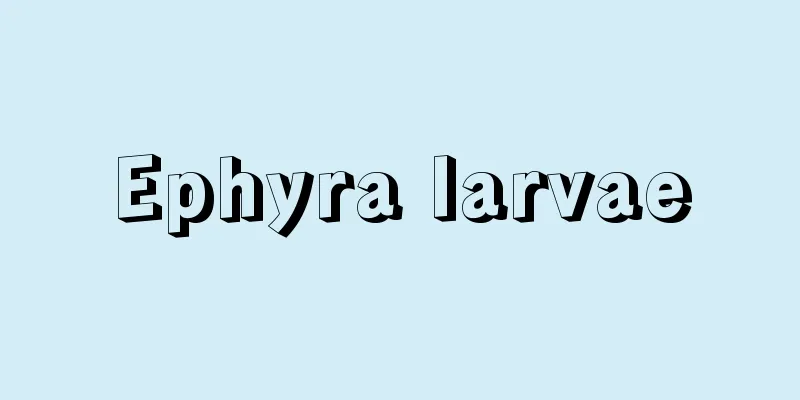Fuze - shinkan (English spelling) fuze

|
An ignition device for exploding or igniting the explosives contained in shells or bombs at a desired time or under desired conditions. Generally, they are divided into warhead fuses and bottom fuses according to the location where they are installed on a shell or bomb, and further according to function, there are (1) normal instantaneous fuses that activate instantly when the shell hits the target to kill personnel, (2) delay fuses that activate after a slight delay in the same situation and penetrate armor, and (3) time fuses that ignite and explode the shell's propellant a specified time after the shell is fired. Time fuses are of mechanical and gunpowder types, but currently only mechanical types are used in anti-aircraft guns and time bombs. Furthermore, there are (4) proximity fuses that emit radio waves from the launched shell or missile itself and are activated by catching the reaction from the target, and (5) control fuses that remotely control missiles or land and sea mines in flight using radio waves, etc. The ignition methods include percussion/inertia using gunpowder, electricity, clocks, radio waves, magnetism, sound, hydraulics, etc., and are used for various purposes. In particular, the proximity fuse (VT fuse) using radio waves, developed in the United States during World War II, is well known as a major invention in anti-aircraft fuses. Furthermore, the fuse is kept in a state where it cannot be activated during storage or movement, but after firing, the fuse's safety is completely released after the sudden acceleration force applied to the fuse and the centrifugal force caused by the rotation for rifling, and then it activates according to the purpose. [Yoshio Kobashi] [Reference] |Source: Shogakukan Encyclopedia Nipponica About Encyclopedia Nipponica Information | Legend |
|
砲弾や爆弾に充填(じゅうてん)されている装薬を、希望の時刻あるいは希望の状況のもとで爆発または発火させるための点火用装置。 一般に砲弾または爆弾に装備される位置によって弾頭信管、弾底信管に分けられ、さらに機能によって、(1)弾丸が目標に命中したとき瞬間的に作動する人員殺傷用の通常型瞬発信管、(2)同じ状況でも多少の遅れをもたせ、装甲などを貫徹してから作動する遅延(ちえん)信管、(3)弾丸が発射されたのち、あらかじめ指定した時間後に弾丸の装薬を点火爆発させる時限信管がある。時限信管には機械式と火薬式があるが、現在では機械式だけが対空火砲および時限爆弾などに利用されている。さらに、(4)射出された砲弾またはミサイル自体から電波を出し、目標からの反応をキャッチして作動する近接信管、(5)飛翔(ひしょう)中のミサイルまたは地雷や機雷などを遠方から電波などで操作する管制信管、などがあり、発火の方法には、火薬を利用した撃発・慣性、電気、時計、電波、磁気、音響、水圧などの種類があり、各種の目的に適合して使われている。とくに第二次世界大戦中アメリカで開発された電波利用の近接信管(VTフューズ)は対空用信管の大発明としてよく知られている。 なお、信管は、保管中や運動中は作動をおこしえない状態に置かれるが、発射後は、信管に急激に加わる加速力や、旋条(ライフリング)のための旋転による遠心力によって信管の安全が完全に解かれてから、目的にあわせて作動する。 [小橋良夫] [参照項目] |出典 小学館 日本大百科全書(ニッポニカ)日本大百科全書(ニッポニカ)について 情報 | 凡例 |
<<: Imperial handwriting - Shinkan
Recommend
Kawagoe Street - Kawagoe Street
...The central city of Chichibu and valley-mouth ...
Iwami Region - Iwami Road
...Furthermore, with the sudden increase in deman...
Heterocera
… Most moths are nocturnal, so many of them have ...
The benevolent government
One of the judicial institutions of the Muromachi ...
Liquid crystal thermometer
…When a polarizing plate has wavelength transmiss...
Horizontal division - Double division
...In particular, in annelids and arthropods, the...
Asakusa
The name of a district in Taito Ward, Tokyo. In t...
Yoroboshi - Yoroboshi
A Noh piece. Also called "Yoroboshi." T...
Fuxi - Fortune Telling
A legendary emperor of ancient China. It is said ...
Doctor of Country - Doctor of Country
(1) The government's political advisors were ...
Tsumura Betsuin
This is a Jodo Shinshu Honganji temple located in...
Free Port Zone
…Foreign trade requires complicated customs proce...
Painting History - Gashi
Drawing. See the entry for "Ga" in the k...
Quamoclit coccinea (English spelling)
… [Eiichi Asayama]. … *Some of the terminology th...
Anglois - Anglois
...(2) Tropical America: South of Mexico and Flor...









